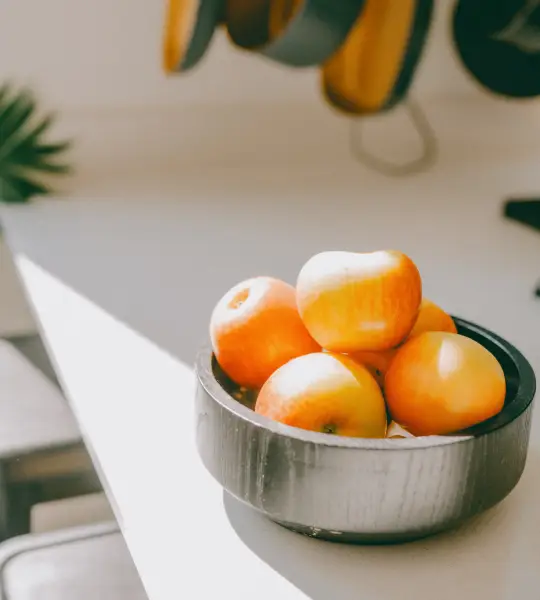Elevate your WordPress content with striking image analysis
Discover the unique design of this layout
Imagine a captivating image layout that is sure to grab your audience’s attention. This design features a dynamic, asymmetrical multi-column format that cleverly mixes engaging text with stunning visuals. On the left side, a bold text block effortlessly flows into two call-to-action buttons, while the right shows off four beautiful images arranged in a striking grid. This smart layout not only makes your content easy to read but also keeps your audience hooked with its compelling narrative flow.
Why you should use this design
Layout analysis
- Overall structure: The strategic multi-column layout sets text and images apart, making everything easy to navigate.
- Arrangement: The layout pulls users into a balanced yet dynamic experience with text on the left and images on the right.
- Asymmetrical choices: Larger text alongside diverse image sizes create a vivid visual narrative.
Element and feature description
- Visible elements:
– Headers: Catch the eye with a main header like “You’ll be sure to have an old fashioned time.”
– Text blocks: Give essential context with informative text below the header.
– Images: A mix of landscape, portrait, and square images add visual interest.
– Buttons: Use buttons like “Get directions” and “Book a cut” to prompt interaction.
- Interactive elements: Buttons engage users, enhancing the overall experience.
- Typography: Bold sans-serif fonts for headings, with lighter fonts for body text, guide the reader effectively.
- Graphical elements: A minimalist approach lets your impactful photography shine, with small icons for clarity.
- Image descriptions: Natural light captures promote a dynamic visual narrative, each with different sizes.
Unique design aspects
- Standout choices: The blend of text and imagery creates a unique storytelling opportunity on your WordPress website design.
- Responsive design: Seamless adapts to any device, ensuring a superb user experience.
- Accessibility considerations: High-contrast text and suitably sized buttons improve usability for all visitors.
Overall design style
- Design style: Embraces a modern, minimalist style that emphasises content while removing clutter.
- Visual hierarchy: Directs attention from headlines to text and images in a logical flow.
- Use of white space: Generous white space prevents information overload, offering a clean look.
10 ways to organise content in WordPress
1. Categories
Organise your WordPress website content into distinct categories to help your audience find what they’re looking for quickly. By labelling your posts with specific categories, you create a clear navigation path and make it easier for search engines to index your site. This method helps in arranging content logically and enhances the overall user experience. Whether you’re sorting through blog articles, products, or service pages, categorising content leads to a more organized and user-friendly website.
2. Tags
Utilise tags to provide additional context for your posts. While categories are broad, tags are more specific descriptors that connect related content across different sections of your site. For example, if your posts fall under multiple categories, tags allow you to link those posts by their common features or themes. This is especially useful for [WordPress blogs](https://maxiblocks.com/wordpress-websites/wordpress-website-builder/wordpress-website-builders/) with diverse topics and makes it easier for visitors to discover similar content.
3. Pages
Pages are ideal for content that doesn’t change often, such as an ‘About Us’ section or ‘Contact Info’. Unlike posts, pages are static, meaning their content remains constant unless manually edited. You can use pages to present important information that your audience will frequently refer to, offering a reliable structure for your WordPress website. This helps maintain a stable, informative presence and supports the categorisation and organisation of related content.
4. Use menus effectively
Navigation menus play a crucial role in structuring your WordPress website, especially when exploring [best practices for using dropdown menus](https://maxiblocks.com/wordpress-websites/wordpress-navigation-menus/best-practices-for-using-dropdown-menus/). Arrange your menus with care, prioritising key sections to facilitate easy browsing. By doing so, you ensure efficient access to all areas of your site, enhancing user experience and functionality. Consider using custom menus to further tailor navigation to suit different audiences or campaigns.
5. Widgets
Widgets enable you to add extra functionality and content to your website’s sidebar, footer, or any widget-ready area. They’re an efficient tool for organising content like recent posts, archive lists, or contact forms. By leveraging widgets, you can enhance user interaction and accessibility. They’re versatile – you might use them to display a search bar, social media links, or calendar, depending on your site’s needs. This makes your WordPress website more interactive and user-friendly.
6. Media library
The media library in WordPress is perfect for storing and organising all your images, videos, and other media files. By categorising and tagging your media content, you create a streamlined workflow for managing assets. This feature allows you to add descriptions and alternative text to images, enhancing accessibility and SEO of your free WordPress themes. A well-organised media library can speed up your content creation process, ensuring you always have easy access to your visual assets.
7. Custom post types
Custom post types extend WordPress functionality beyond posts and pages, offering a tailored content structure. By creating custom post types, you can define unique formats for different content, such as portfolios, testimonies, or case studies. This aids in organising and displaying content in a way that best suits your business requirements. It’s an excellent way to structure diverse content and provides flexibility in assembling a custom WordPress website.
8. Use of taxonomies
Taxonomies enable WordPress users to further categorise posts beyond default categories and tags. By creating custom taxonomies, you can organise posts, links, or custom post types in a structured way. This not only enhances searchability within your WordPress website but also makes it easier for users to interact with your content. Custom taxonomies provide a richer, more detailed organisational structure, offering visitors clear paths to follow based on their interest areas.
9. Utilize permalinks
Setting descriptive permalinks is essential for organising your WordPress website content effectively. A permalink is the link to an individual post or page and should be structured to reflect the content accurately. Well-defined permalinks help search engines index your website and improve user experience by providing clear, understandable links. A thoughtful permalink structure creates a seamless navigation flow and supports the site’s SEO strategy.
10. Collaborative tools
WordPress offers various plugins that facilitate content collaboration and team management. By using these tools, teams can streamline the content creation and review process, ensuring everything is well-organised and published timely. Collaborative tools allow for version control, multiple user access, and task assignments, integrating seamlessly with your WordPress navigation. These tools enhance productivity and maintain consistent quality across site content.
10 different types of content in WordPress
1. Blog posts
Blog posts are the cornerstone of many WordPress websites, providing a platform for sharing ideas, stories, and information. Regularly publishing engaging posts keeps your audience returning for more and improves your search engine rankings. The flexibility of WordPress allows for including images, videos, and links to enhance your posts. Whether you’re narrating a personal blog or offering professional insights, posts are an excellent choice for showcasing your expertise and connecting with your audience.
2. Pages
In the realm of WordPress templates, pages are static and used for information essential to your site, such as ‘About Us’ or ‘Contact’ information. They remain unchanged unless updated manually, making them reliable tools for sharing long-term, foundational content. Pages provide structure and are typically linked through menus for easy navigation, ensuring crucial information is readily accessible.
3. Portfolios
WordPress provides excellent features for showcasing portfolios, making it perfect for creatives like designers, photographers, and artists. Portfolio sections allow you to display work samples comprehensively, affirming your skills and expertise. This type of content is driven by visuals, emphasising quality and clarity to impress potential clients. It’s an interactive way to present what you offer, complete with descriptions, links, and contact buttons for easy engagement.
4. Product pages
When running an online store, well-crafted product pages are vital to display your product range. These pages must offer detailed descriptions, high-quality images, and purchase options. Effective product pages are the backbone of eCommerce WordPress pattern libraries, enticing customers by showcasing the unique features and benefits of your products. Product pages simplify the shopping experience, leading to better conversion rates.
5. Testimonials
Showcasing testimonials is a powerful way to build trust and credibility among potential clients or customers. By placing genuine, positive feedback from previous clients on your WordPress website, you provide social proof of your competence and service quality. Testimonials are often displayed prominently on a homepage or dedicated page, forming an integral part of your marketing strategy. Enhancing these with images or video testimonials can further reinforce their impact.
6. Galleries
Photo and video galleries serve as a visual feast for your audience, making them ideal for artists, photographers, and businesses aiming to display rich multimedia content. A gallery lets you curate a compelling collection of visuals that reflect your brand’s aesthetic and message. Galleries when organised and interactive, engage users effectively and keep them exploring your website longer, fostering a stronger connection with your audience.
7. Case studies
Case studies offer detailed accounts of how your products or services solve real-world problems, making them particularly useful for B2B businesses. These written pieces typically outline the challenge, process, and results, showcasing your problem-solving skills and expertise. Writing compelling case studies fosters credibility, positions your brand as a thought leader, and demonstrates value to prospective clients. They’re essential for websites focused on professional services or consultancy.
8. Event calendar
For businesses or organisations that host regular events, embedding a calendar into the site provides users with valuable scheduling information. The event calendar can show dates, times, locations, and additional details about upcoming events. It streamlines announcements and invites users to engage more directly with activities. A well-maintained calendar not only helps in maintaining current information but also boosts attendees and participation.
9. Interviews
Hosting interviews on your Elementor alternatives website provides exclusive insights from industry insiders, experts, or influencers. These interactions, whether in video, audio, or text form, are engaging content pieces that offer unique perspectives. Interviews can draw a wider audience to your site, enhance your content’s appeal, and build associations with respected figures in your field. They add value and fresh viewpoints, keeping your content dynamic.
10. Podcasts
Podcasts are increasingly popular for reaching audiences who prefer audio content. With WordPress, you can seamlessly integrate podcast episodes onto your site, offering another medium for storytelling, education, or entertainment. Podcasts expand your content spectrum, attract auditory learners, and provide an opportunity to explore topics in depth. They’re great for establishing authority and building relationships with loyal listeners, complementing your other site content.
Conclusion
By applying a dynamic, asymmetrical WordPress website design, you can captivate and engage your audience like never before. This approach combines visual storytelling with user-friendly design, ensuring a memorable experience. From organising content with categories to diversifying with multimedia like podcasts or widget galleries, leveraging these strategies enhances your WordPress website. Embrace these elements, and watch your site transform into a visually stunning, informative, and user-centric platform.







